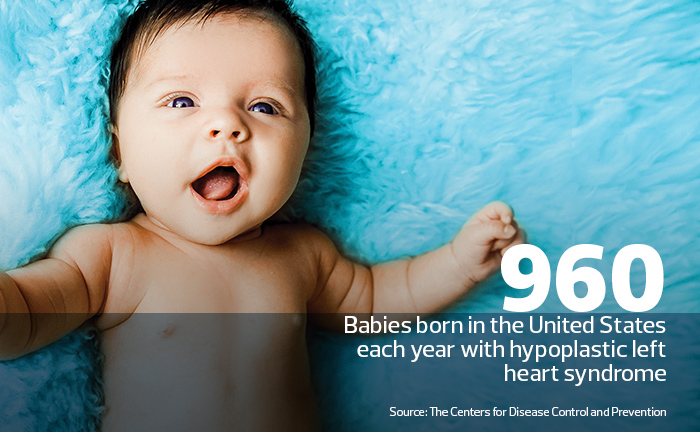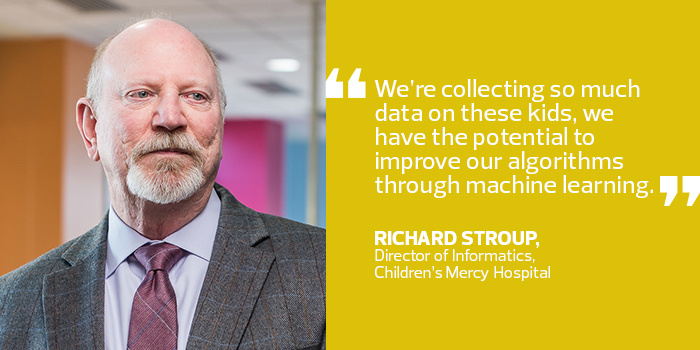Cloud Use Spurs Strategic and Life-Saving Healthcare Innovation
Hypoplastic left heart syndrome leaves newborns with only one functioning heart ventricle. Three surgeries within the first three years of life can correct the deadly defect, but up to 25 percent of newborns with HLHS never leave the hospital; another 20 percent may die by age 6 months.
By leveraging the cloud to store patient information, however, doctors at Children’s Mercy Hospital in Kansas City, Mo., are saving many babies born with the congenital heart disease. Since the 2014 launch of a tool that takes advantage of Microsoft Azure, physicians have helped more than 80 families with one mortality.
The cloud’s impact on patient care is also being felt in the Rocky Mountains, where organizations like University of Colorado Health and Children’s Hospital Colorado access information from Health Data Compass (HDC), an enterprise health data warehouse that links records from those and other facilities to offer a longitudinal look at patient health.
Healthcare organizations nationwide practice more informed medicine thanks to the cloud’s bandwidth flexibility, which enables faster data capture and more robust use of analytics.
Mobile Applications Grant Instant Access to Live-Saving Info
The key to surviving HLHS is close parent monitoring of infants between their first and second surgeries, which take place at one week and 4 to 6 months of age, respectively.
To do so, providers at Children’s Mercy previously armed parents with a three-ring binder filled with blank forms to measure and record their child’s heart rate, oxygen levels and weight, as well as bowel and bladder movements and food intake throughout each day. Once per week, the parents would either call the hospital to read the information to a nurse or physically bring the binder with them to an appointment.
 Now, though, a mobile app developed by Children’s Mercy pediatric cardiologist Dr. Girish Shirali, Director of Informatics Richard Stroup and the hospital’s heart center team streamlines that process. Instead of a binder, parents are handed Microsoft Surface 3 tablets loaded with the app, known as the Cardiac High Acuity Monitoring Program (CHAMP).
Now, though, a mobile app developed by Children’s Mercy pediatric cardiologist Dr. Girish Shirali, Director of Informatics Richard Stroup and the hospital’s heart center team streamlines that process. Instead of a binder, parents are handed Microsoft Surface 3 tablets loaded with the app, known as the Cardiac High Acuity Monitoring Program (CHAMP).
Each child’s health information is entered into the CHAMP app, says Stroup, which uploads instantly to an account in the cloud. The app also prompts parents to capture a 15-second video of their child each day.
Machine-learning algorithms parse the data and flag anything outside a normal range — like sudden weight loss or an oxygen saturation reading below 70 percent — and immediately alert the child’s healthcare team. It will also flag the team if parents fail to enter their child’s information for 24 hours or more.
“The most interesting thing about CHAMP is that because we’re collecting so much data on these kids, we have the potential to improve our algorithms through machine learning,” Stroup says. “We might be able to use that to build a better model of the disease based on what we’re actually seeing, as well as apply machine learning to analyze the videos parents record.”
The Cloud Takes Results from Hours to Minutes
The Colorado hospitals have also turned to data. HDC contains genomic data and personal health records for 6 million patients and eventually plans to combine that with information from insurance databases, public health records, social media and wearable devices, says Michael Ames, the warehouse’s associate director. The ultimate goal is to collect as much data as possible to come up with more highly targeted diagnoses and treatments.
 “We know the answer is in the data,” Ames says. “The problem is, data from electronic health records is awful. It’s messy and incomplete. We hope that by gathering data from enough sources, we can start to create a more complete picture of patient health.”
“We know the answer is in the data,” Ames says. “The problem is, data from electronic health records is awful. It’s messy and incomplete. We hope that by gathering data from enough sources, we can start to create a more complete picture of patient health.”
When Ames and his colleagues at the University of Colorado Denver initially launched HDC in March 2015, they tried to do it entirely using on-premises equipment. Within a few months, however, they realized this approach was painfully slow and expensive.
Soon after, Ames and his team turned to the cloud to host HDC. They instantly noticed improvements.
Record matching and data deduplication — for example, determining that “Robert Jones” and “Bobby Jones” refer to the same person — previously required up to eight hours of work on HDC’s old servers. The same process on the cloud takes about 15 minutes, Ames says.
The new cloud-based HDC officially went live last fall.
Cloud Offers a Longitudinal Look Ahead
Having the complete picture of a patient’s data accessible via the cloud is the holy grail of medical informatics. But that’s still a long way off for most healthcare organizations, warns Mitchell Josephson, director of research and analytics for KLAS, a healthcare technology research firm.
“It’s still more the exception than the rule,” Josephson says. “When it comes to storing patient data in the cloud, the healthcare industry is still very immature.”
A cloud-based personal health platform named “Hugo” aims to change that. This next-generation personal health record will enable patients to store all of their medical information in one place, says Dr. Harlan Krumholz, the app’s developer and a professor of medicine, epidemiology and public health at the Yale School of Medicine.
Users authorize Hugo to act on their behalf, so it can collect their data from different care provider portals and synchronize it with research databases and information collected via surveys and wearable devices — all without running afoul of the Health Insurance Portability and Accountability Act.
“It’s a huge pain to merge all this data,” Krumholz says. “But by leveraging patients’ permissions, Hugo will put zero burden on healthcare practitioners and require very little work by patients. Once we get a patient’s whole story, we’ll have the potential to improve clinical care and make research more efficient.”
Increased Efficiencies Are Saving Lives
Prior to the 2014 deployment of CHAMP at Children’s Mercy, between 10 and 20 percent of infants failed to survive past six months. Weekly updates were not frequent enough to provide early indicators of heart failure, Stroup says.
In addition to the 80-plus families who benefited from its use, in January 2016, Children’s Mercy shared the program with Seattle Children’s Hospital. More recently, children and families within the Cincinnati Children’s Hospital Medical Center have benefited. To date, more than 120 families have used CHAMP, with a mortality rate of less than 2.5 percent. Now, Children’s Mercy wants to expand it to other pediatric heart diseases.
Yale’s Krumholz calls the ability to access more data more quickly thanks to cloud-based tools like Hugo a game changer: “I think we’re still in the first inning of a game that’s going to take a while. But we’ve got to start somewhere.”









